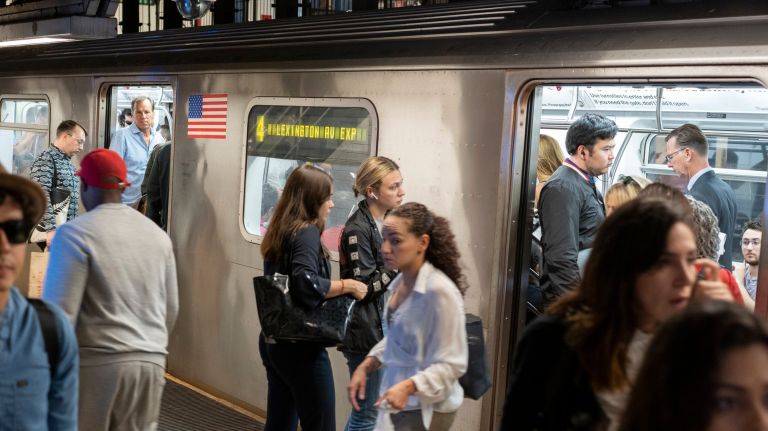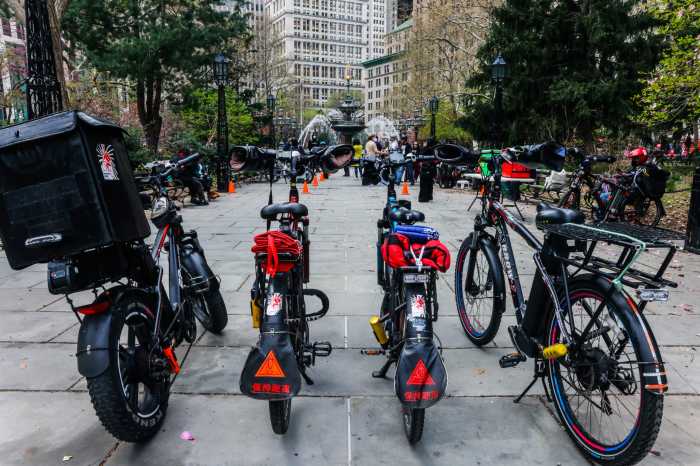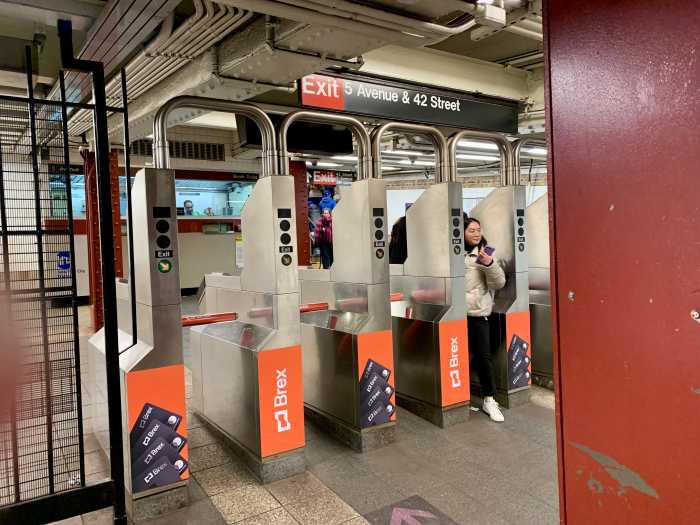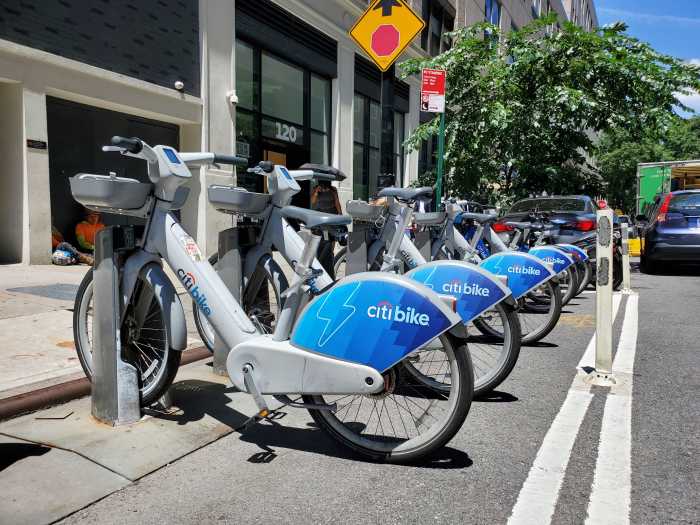
While discussing major subway improvements, NYC Transit President Andy Byford asked that commuters exercise a virtue not often associated with New Yorkers: patience.
The MTA’s proposed five-year plan for capital spending includes $7.1 billion for installing modern subway signals on stretches along six lines — allowing for shorter waits and more reliable trains. But the construction will likely require a pause on 24-hour service, with extensive, monthslong outages on nights and weekends.
“First up, let’s be clear: re-signaling the subway is going to take the patience of New Yorkers,” Byford said during a briefing on the plan last week.
The plan would replace the subway’s 1930s-era signals, which control the movement of trains through the system, with a contemporary computerized equivalent called Communications-based Train Control (CBTC). The technology has become the industry standard and is currently only in use on the L line and, more recently, the 7.
During nights and weekends, riders would likely be diverted from lines migrating to the new signal system and onto other trains or shuttle buses.
While commuters grimaced at the idea of even more disruptive off-peak subway service, some welcomed the short-term pain if it eventually brought real benefits.
“For me, reducing the number of trains for ‘x’ number of months or even years — if it means it’s good for the long run, that’s more important to me,” said Minerva Ho, a commodities trader who frequently takes the Lexington Avenue line.
Byford and advocates have spent more than a year stressing the importance of upgrading the subway’s signals. That message seems to have reached riders like Ho and Glenn Thorbourne, who takes the 4 down from the Concourse section of the Bronx to his job on the Upper East Side of Manhattan.
“They have to do it. I understand the signals are ancient and it’s really bad,” Thorbourne said.
After installing CBTC on the 7 line, the MTA was able to run 29 trains per hour, four more than previously permitted. But the project also ran $157 million over budget, was completed five years after deadline and was buggy days after it launched.
Byford, who joined the MTA in 2018 toward the end of that project, acknowledged that the 7 line re-signaling took “too long” and that he and his signal chief Pete Tomlin were working on quicker and less invasive ways to install CBTC on subway tracks.
There are still many uncertainties around the work, though, including how many additional trains the MTA would be able to run after the upgrades; exactly what alternative travel plans would be in place; and how long it would take to complete the work on the targeted corridors. At the moment, Byford and other officials are only committing to significantly completing the upgrades on the six identified stretches within the five-year window of the 2020-2024 capital plan.
“We will need to certainly make great use, extensive use, of weekends … we’re not ruling out [full] line closures, but the lessons learned with the L project is there are ways to avoid that kind of thing,” Byford continued. “So certainly that would be a last resort for me.”
The MTA plans to re-signal the following corridors:
- Lexington Avenue line: 4, 5, and 6 trains, running between Grand Concourse-149th Street in the Bronx and Nevins Street in Brooklyn
- Astoria Line: N and W trains, between Ditmars Boulevard in Queens and 57th Street in Manhattan
- Fulton Line: A and C trains, between Jay Street-MetroTech and Euclid Avenue in Brooklyn
- Crosstown Line: G train, between Court Square in Queens through Hoyt-Schermerhorn in Brooklyn
- Queens Boulevard line: E and F trains, Kew Gardens-Union Turnpike to Jamaica-179th Street in Queens
- 63rd Street line: F trains, 21st Street-Queensbridge in Queens to 57th Street-Sixth Avenue in Manhattan
Many commuters expressed anxiety about the potential changes. In Brooklyn, G train riders fretted over possible outages on what serves as some riders’ sole subway connection.
Jeff Soto, who lives in Bedford-Stuyvesant and works in midtown, wanted to know exactly how quickly the MTA could get the work done.
“It depends on the duration of the service disruptions. The G train really is a lifeline to a lot of people and it could be very disruptive,” said Soto.
Curtailed service could lead to commuting chaos for Sarina Bhuiyn, a retail worker from Bedford-Stuyvesant who clocks in on weekends.
“There are a lot of people who work over the weekends, so it could be really bad,” Bhuiyn said. “I’ve had to deal with it already.”
Riders from across the city agreed that the current MTA shuttle bus service offered during major track work is a miserable alternative, given that it leaves riders waiting for packed buses to maneuver through traffic.
“It’s terrible. They’re crowded — you’re packed in like sardines — and it’s always a mess,” said Soto. “I refuse to use them.”
Ben Wigler, an animator from Fort Greene, said he has instead relied on ride-hailing apps when faced with the prospect of shoddy shuttle bus service. He worried that the MTA would not be able to efficiently move impacted riders during the work — especially on busy lines like Lexington.
“The idea of selectively shutting down service, it would be insane to do to the 6 train, to the Lexington Line,” said Wigler.
Byford said he would push the city for more bus lanes, which would give shuttles more priority on city streets and ideally make them more dependable.
“Definitely, we need to work with the city to provide shuttle services, to provide alternatives while we affect those upgrades,” Byford said. “I’m absolutely pro-bus lanes.”
The city’s stance on reserving more lanes for buses remains to be seen. Mayor Bill de Blasio’s administration is still debating whether it should hand over the $3 billion the MTA requested that it contribute toward the $51.5 billion capital plan.
The transit authority’s board is expected to vote on this proposal on Wednesday.
“The MTA has come forward with some very good plans over the years and some very questionable plans over the years,” de Blasio said last week, “and so we don’t take anything at face value.”
Advocates criticized the MTA for releasing its capital plan about a week ahead of when it required approval, but many were pleased that subway re-signaling earned top billing.
“[The MTA] is headed in the right direction,” said Sarah Kaufman, the associate director of the NYU Rudin Center for Transportation. “Signal modernization is probably the number one priority, as it should be.”




























